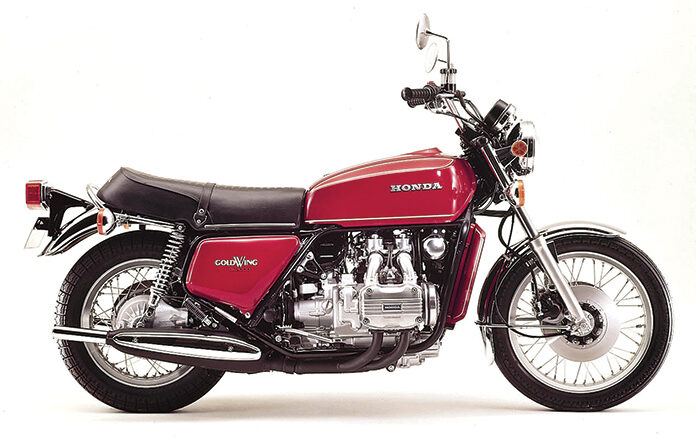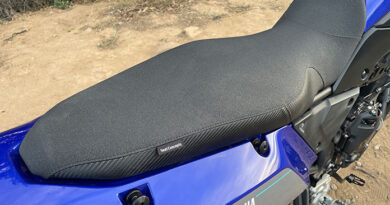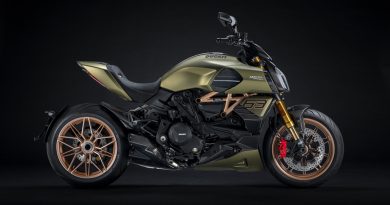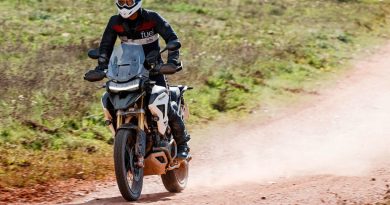10 Most Significant Motorcycles of the Last 50 Years
The following feature on the 10 most significant motorcycles of the last 50 years first appeared in the March issue of Rider as part of our new “Rider Rewind” feature, a monthly tribute to various aspects of either motorcycling history or the 50-year history of the magazine, which was founded in 1974.
During Rider’s 50‑year history, we’ve announced, featured, tested, and toured on thousands of motorcycles. We’ve covered a wide spectrum that includes pretty much anything with a license plate: cruisers, tourers (sport/luxury/traditional), sportbikes, standards, adventure bikes, dual‑sports, cafe racers, classics, scooters, trikes, electric bikes, and some that defy easy categorization. Here are 10 significant motorcycles that changed the course of two-wheeled history.
1. 1975 Honda GL1000 Gold Wing
We’ve got a soft spot for the Gold Wing because it was introduced soon after Rider got started. With its driveshaft and liquid‑cooled engine, the Wing has evolved over the past 49 years from a naked high‑performance machine to a luxury tourer, from four cylinders to six, and from a displacement of 1,000cc to 1,833cc. Its first dresser version all but killed the aftermarket for fairings and saddlebags, and later versions introduced the first motorcycle airbag and were available with Honda’s automatic Dual Clutch Transmission.
Honda Gold Wing Timeline: 1972-2018
2. 1981 BMW R 80 G/S
The R 80 G/S was the first motorcycle that delivered on‑road comfort and performance and genuine off‑road capability in equal measure, and its air‑cooled “boxer” flat‑Twin and driveshaft could be traced back to BMW’s first production motorcycle, the 1923
R 32. Between 1981 and 1985, the G/S (the slash was later dropped) notched four wins in the grueling Paris‑Dakar Rally. After launching the adventure bike revolution and becoming BMW’s bestselling model, the completely new R 1300 GS was unveiled on BMW Motorrad’s 100th anniversary.
2024 BMW R 1300 GS Review | First Ride
3. 1984 Harley‑Davidson FXST Softail
In 1983, Harley‑Davidson was in deep trouble. Its old Shovelhead motor had run its course, so the MoCo introduced a new 80ci Evolution motor, an air‑cooled, 45‑degree V‑Twin with aluminum heads and numerous improvements. It was offered in several ’84 models, including the new custom‑look Softail, which appeared to have a classic hardtail frame but concealed dual shock absorbers under its engine. That Evo motor helped save the company, and the Softail was a huge success, paving the way for the Harley‑Davidson juggernaut of the ’90s and beyond.
See all of Rider‘s Harley-Davidson coverage here.
4. 1986 Suzuki GSX‑R750
Before the Gixxer appeared, a “sportbike” was a standard motorcycle to which the owner had added engine mods, a lower handlebar, and suspension and braking upgrades, all in an exhaustive and expensive effort to improve power and handling. With its oil‑cooled inline‑Four and aluminum frame, the lightweight GSX‑R750 was track‑ready right out of the box. The GSX‑R launched the sportbike wars among the Japanese Big Four, and 600cc, 750cc, and 1,000cc models sold like hotcakes and won numerous championships.
Suzuki GSX-R750: The First Generation 1986-1987
5. 1987 Kawasaki KLR650
When it punched its KLR600 dual‑sport out to 650cc for 1987, Kawasaki struck a near‑perfect balance between on‑road comfort and off‑road capability, and it went on to sell a boatload of KLR650s without making significant changes for decades. A true do‑it‑all, go‑anywhere machine that was both affordable and bulletproof, the KLR became a popular choice for round‑the‑world travelers and helped launch an ADV aftermarket cottage industry. It got its first major update in 2008, and fuel injection finally arrived in 2022.
Requiem for the Kawasaki KLR650 (1987-2018)
6. 1990 Honda ST1100
By 1989, sport‑tourers were either a low‑buck Kawasaki Concours or a high‑dollar BMW, both of which had been adapted from other models. In 1990, Honda made the bold move of introducing a purpose‑built sport‑tourer with a full fairing, integrated bodywork, removable saddlebags, and shaft drive. Its liquid‑cooled, longitudinal V‑Four was designed specifically for this model, which was known for its plush suspension, comfortable seat, and huge 7.4‑gallon tank. The ST1100 was a big hit and helped establish the open‑class sport‑touring segment.
Retrospective: 1990-2002 Honda ST1100
7. 1993 Ducati M900 “Monster”
Known for exotic, sophisticated motorcycles that win races and steal hearts, one of Ducati’s most endearing and enduring models is the Monster. Embracing simplicity, designer Miguel Galluzzi said, “All you need is a saddle, tank, engine, two wheels, and handlebars.” The M900 (nicknamed “Monster”) had a steel trellis frame, an air‑cooled 904cc L‑Twin, a “bison‑back” gas tank, a tubular handlebar, and a round headlight. An instant hit, it spawned numerous Monster models and came to define what a naked bike should look like.
2023 Ducati Monster SP | First Look Review
8. 2001 Triumph Bonneville
Few motorcycles are as iconic as the Triumph Bonneville. First introduced in 1959 and named after the famous Utah salt flats where Triumph set a world record, the Bonneville was advertised as “the fastest production motorcycle made” and became hugely popular in the U.K. and America. After Triumph went bankrupt in the early ’80s, the marque was resurrected by John Bloor and relaunched in the mid ’90s. But it wasn’t until 2001 that a modern Bonneville was born, offering a perfect blend of retro style and modern engineering.
2022 Triumph Bonneville Gold Line Editions | First Look Review
9. 2001 Yamaha FZ1
The FZ1 offered liter‑class sportbike performance in a comfortable, street‑friendly package that could be used for commuting, canyon carving, sport‑touring, or trackdays. Derived from the mighty YZF‑R1, its 998cc inline‑Four was retuned for midrange torque but still made 120 hp at the rear wheel. The FZ1 paved the way for powerful, practical sit‑up sportbikes such as the Aprilia Tuono, BMW S 1000 RR, and KTM Super Duke. The 2006 FZ1 (pictured) was our Motorcycle of the Year, and its spirit lives on in Yamaha’s MT‑10.
2006 Yamaha FZ1 Road Test Review
10. 2014 KTM 1190 Adventure
Derived from its Dakar Rally‑winning LC8 950R, KTM’s 950/990 Adventure models were the most dirt‑oriented big ADVs on the market from 2003‑2013. In 2014, KTM launched the 1190 Adventure, which offered sportbike levels of street performance while still being highly capable in the dirt. Its LC8 V‑Twin cranked out 150 hp, and its state‑of‑the‑art electronics included not only ride modes, traction control, and electronic suspension but also the world’s first cornering ABS system, ushering in the current era of high‑tech ADVs.
2014 KTM 1190 Adventure | Road Test Review
So do you agree? Or do you have other opinions on the most significant motorcycles of the past 50 years? Comment below or visit our Facebook or Instagram pages. We’re sure there will be some lively debate on this one.
And now that you’ve taken this blast down memory lane of our choices of the 10 most significant motorcycles, be sure to check out Rider‘s 2024 Motorcycle Buyers Guide for some newer bike choices.
The post 10 Most Significant Motorcycles of the Last 50 Years appeared first on Rider Magazine.





